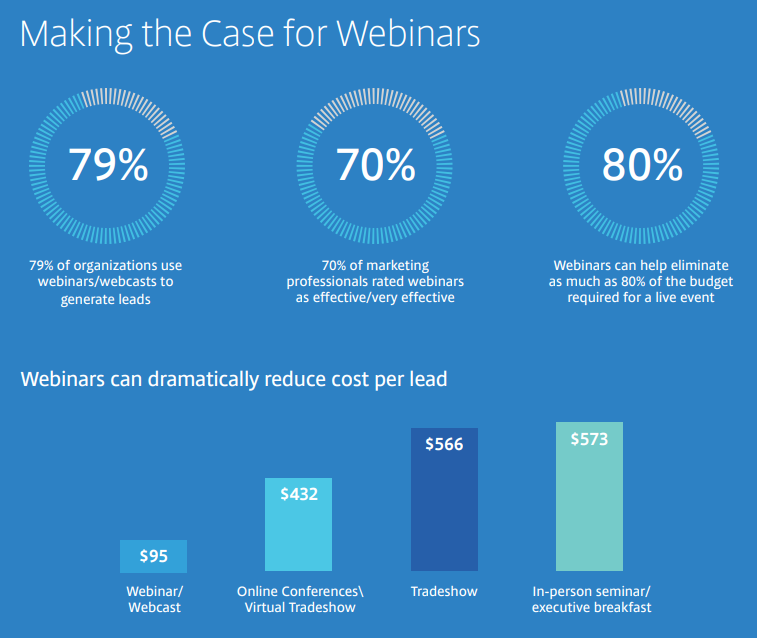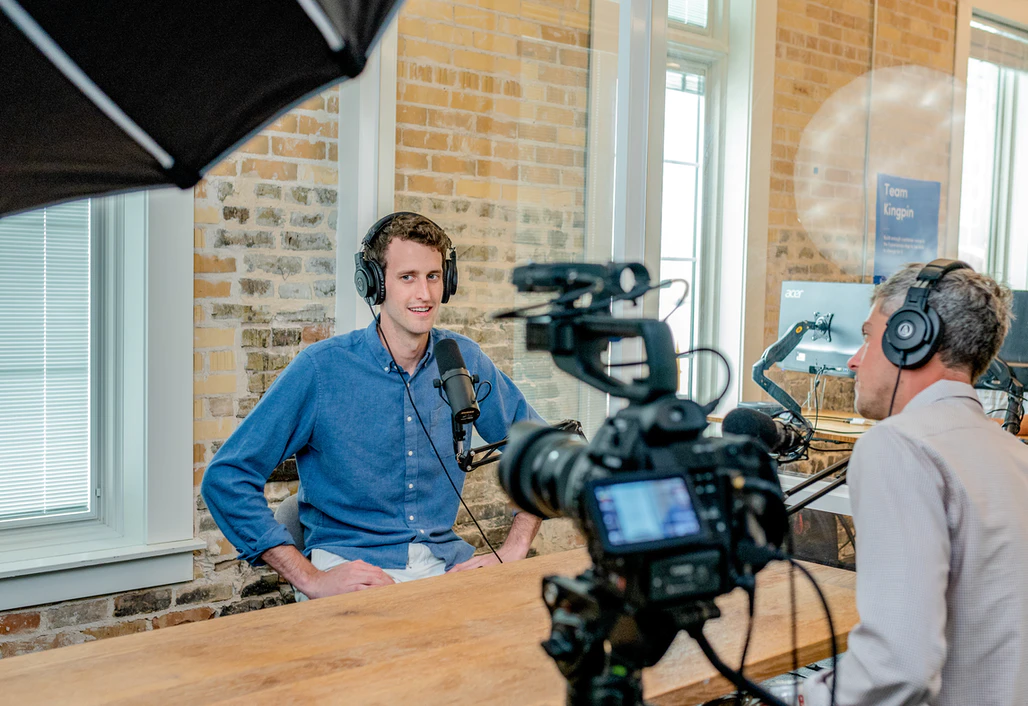Webinars are effective in comparison to pre-recorded videos because they offer an opportunity to interact, ask questions, and sell to your audience in real-time.
Whether or not people are primed to take action by the end of your webinar depends heavily on how well you’re able to keep their attention. If you want your webinar to be effective, your audience must remain engaged.
It’s equally important to consider the technical aspects of your webinar, such as the audio, streaming latency, and mobile optimization. Your efforts to create great content can be woefully counteracted by poor video and sound.
In this article, we’ll run through 10 top tips you can use to optimize your webinars.
1. Define the journey
Defining the journey is one of the best ways to attract people to your webinar and ensure they stay engaged.
People are more likely to watch a webinar when the outcome you’re trying to provide is clear. It could be using multiple line business phones to generate more leads, for example. When people know what the end goal is, they have an easier time staying engaged and attentive.
Defining the journey well relies on three key elements:
1. Who is on the journey? Describe who your webinar is for.
2. Where does their journey begin? Describe where this person is starting out, what they already know, and what struggle is compelling them to seek a new destination.
3. What is the destination? Outline the final outcome or result your webinar will provide.
You should make these three key facets clear in every aspect of your marketing as part of your brand communication strategy. It’s important to reiterate this during the actual webinar. You make it easy for your attendees to follow you as you lead them toward their eventual destination.

2. Establish trail markers
This tip is similar to the previous one but provides a little more granularity to the journey. If defining the journey is like showing your attendees a map from Point A to Point B, establishing trail markers shows important turns and intersections you’ll encounter along the way.
If you’ve written an outline for your webinar, use the major points to communicate what you’ll cover.
For example, say you’re hosting a webinar about PCI compliance. A simplified version of your outline might look something like this:
- Maintaining a firewall
- Creating custom passwords
- Encrypting cardholder data
Each of these bullet points would have its own sub-points and plenty of additional information, but at the beginning of the webinar, you’re simply defining the journey and letting attendees know what the major trail markers will be along the way.
This gives your presentation a sense of structure, builds anticipation for what you plan to cover, and keeps your attendees engaged.
3. Renew attention regularly
Even with a clear direction and established trail markers, it’s important to make a purposeful effort to keep attendees engaged and attentive. Even when people are interested in what you’re saying, it’s natural for attention to drift, especially if you don’t offer enough variety in the way you present information.
Look for opportunities in your outline to strategically use different presentation methods to keep attendees on their toes. You could ask a question and encourage people to respond, tell a personal story related to the topic, or utilize other types of media such as animation.
This method takes advantage of the human tendency to seek out new experiences. When we can’t anticipate what’s ahead, we pay more attention. Inserting these moments consistently throughout your presentation will keep your attendees focused and eager to see what happens next.

4. Create a fill-in-the-blanks worksheet
Your basic outline or framework for your webinar can be turned into a worksheet on which attendees fill in the missing words.
Say, for example, you’re a video marketing coach, and you’re hosting a webinar about finding content topics that resonate. You could provide some type of Venn diagram that you walk them through filling out, so they can visualize overlapping themes and find the best topics.
This not only keeps attendees engaged, but they’ll retain more of what you’re teaching because they’re actively participating.
5. Manage questions strategically
Saving questions for the end of the webinar might seem like conventional wisdom, but it’s not great advice if you’re trying to keep people engaged. Allowing and answering questions throughout your webinar can be challenging, but if you approach it the right way, it’s much more effective for holding people’s attention.
As you go through the outline of your script, put yourself in your attendees’ shoes and work out what questions they might have. This way you can allow these without breaking the flow of the presentation. For example, if someone asks ‘what is VoIP phone service?’, you’ll already have the answer to hand.
Depending on how you plan to field questions, make sure you communicate when and how they can be submitted and when attendees can expect them to be addressed.

6. Interactive live streaming
Chat functionality, polls, and two-way live videos are just a few of the ways you can make your live webinar interactive. There are many other creative ways, such as allowing email to a fax number that can be printed and read on stream.
Allowing attendees to directly influence the content in real-time will greatly boost their levels of attention and engagement, and these types of interactive experiences enable parts of the webinar to be personalized to your audience.
If you anticipate having a lot of attendees, a moderator will help you manage the chat so you can stay focused on your presentation. This is someone who can interact with attendees in the chat room on your behalf. They’re great for sharing links, providing instructions, and dealing with spam.
Ensure your interactive live stream is optimized for attendees using smartphones and tablets. 25% of people are reported to watch webinars from mobile devices. If interactive functions are poorly optimized for these devices, your webinar will suffer.
7. Live stream latency
Stream latency is the delay between your live webinar feed being recorded and then transmitted to the screens of your audience. It’s important to consider the ideal latency for your webinar in order to optimize everyone’s experience.
The best app for video calls is not necessarily the best for streaming a webinar. Lower latency is most suited for interactive live streams with a lot of real-time audience participation, and setting up your webinar in this way optimizes it for engagement. However, it is more likely that your audience will experience some buffering.
8. Have a clear call to action
Whether you’re planning to sell something or asking people to sign up for a newsletter or download nonprofit software, it’s important to state clearly what you want your audience to do at the end of your webinar.
Think about our earlier tip of defining the journey and consider the moment when you and your attendees arrive at the final destination. You don’t want them wondering what to do next. You want them to get to the end of your webinar having clarity and direction.
To accomplish this, we recommend including your call to action strategically throughout your presentation: once at the beginning, a couple of times during, and once at the end.

9. Do a practice run-through
Unless you’ve been doing webinars for years, you’ll benefit from a practice run. In doing so, you can find opportunities to tweak your presentation and identify slow spots or repetitive information. You’ll also become more familiar with your material so you don’t have to lean on it as much during the presentation and can engage more with your audience.
The technical side of your presentation will also benefit from a run-through. Be sure to test your equipment. Is the camera pointed the right way? Are your slides displayed the way you intended? Is the video stream stable? How does your audio sound?
10. Make sure you have good audio
On that latter point, the quality of your audio can make a huge difference when it comes to engagement levels. People can tolerate sub-par video quality, but if the audio is bad, it becomes really difficult to pay attention. The simplest and most inexpensive way to improve your audio is by using a USB microphone.
In addition to having good hardware, it’s wise to check the environment in which you’re recording. If there’s a lot of outside noise or the room is echoey, you might consider moving to a quieter location.
In your run-through, pay special attention to the audio and make tweaks if needed to provide the best possible audio experience for your attendees.
Use our 10 top tips today to optimize your webinars!



